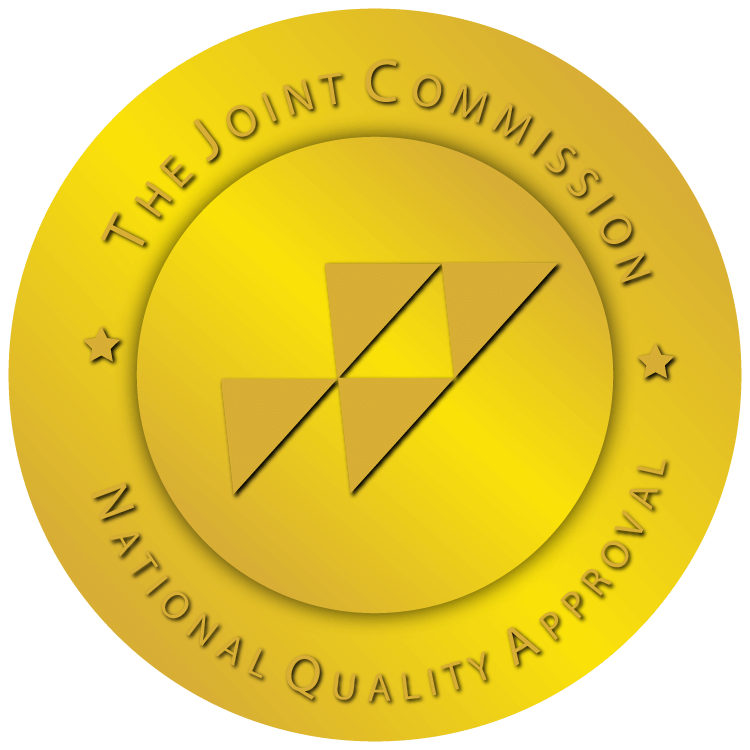If you or someone you love is struggling with Adderall use, detox from Adderall can be the first step toward recovery. According to the National Center for Drug Abuse Statistics (NCDAS), 45.8% of American adults used a prescription drug – legally or not – within the past 30 days.1 The Substance Abuse and Mental Health Services Administration SAMHSA also reports that about 17.8 million people used prescription stimulants like Adderall in 2022.2
What does this mean? It shows that prescription drug misuse is common, and Adderall remains a concern. If you’re thinking about quitting Adderall, it’s important to know what to expect.
This guide will help you understand the signs of addiction, the detox process, and the treatment options so you can take the next steps toward a healthier future.

What Is Adderall?
Adderall is a prescription drug that helps people with attention deficit hyperactivity disorder (ADHD). It contains two stimulants, amphetamine and dextroamphetamine, which work together to improve focus, attention, and self-control. Doctors also use it to treat narcolepsy, a sleep disorder that makes people feel extremely tired during the day.
Adderall changes how your brain works. It increases levels of dopamine and norepinephrine, chemicals that control focus, energy, and motivation. When taken as prescribed, it helps people with ADHD feel calmer and more in control.
Many people take Adderall because their doctor prescribes it for a medical condition. But some people use it for other reasons, like:
- Studying longer or improving focus at work
- Staying awake for long hours
- Boosting energy or losing weight
- Feeling more confident or alert
While Adderall can seem helpful in the short term, misusing it can lead to serious health issues, including addiction. It’s important to use it only as prescribed and talk to a doctor if you’re struggling with dependence.
Signs of Adderall Addiction or Abuse
Recognizing the signs of Adderall addiction or abuse is essential for seeking timely help.
Behavioral Signs:
- Increased Tolerance: Over time, you may need higher Adderall doses to feel the same effects. This tolerance can signal dependence. A study found that 24.7% of patients developed tolerance in weeks, while 2.7% did over 10 years. Research shows the effects of medication often weaken over time.3
- Compulsive Use: If you start taking Adderall more frequently or in larger amounts than prescribed, or if you feel unable to control your usage, this compulsive behavior is a hallmark of substance use disorders.4
- Neglecting Responsibilities: When Adderall use begins to interfere with your daily obligations – such as work, school, or family duties – it may indicate a substance use problem. Prioritizing drug use over responsibilities is a common sign of addiction.
Physical Signs:
- Sleep Disturbances: Misuse of Adderall can lead to sleep problems, including difficulty falling or staying asleep. Persistent insomnia can be a sign of stimulant misuse.5
- Weight Loss: Adderall can suppress appetite, and its misuse may result in noticeable weight loss. A study found that some young adults misuse prescription stimulants for weight loss, often along with other unhealthy methods.6
- Cardiovascular Issues: The most common heart-related side effects are high blood pressure and a fast heart rate, seen in both short- and long-term use. These symptoms can pose serious health risks if left unaddressed.7
Psychological Signs:
- Mood Swings: Experiencing extreme highs and lows, irritability, or emotional instability can be linked to stimulant misuse. These mood changes may affect your relationships and daily interactions.
- Anxiety: Research by Gudmundsdottir et al. found a strong link between ADHD symptoms, anxiety, and stimulant misuse.8 These psychological effects can be distressing and impact your well-being.
- Hallucinations or Delusions: In severe cases, misuse of stimulants like Adderall can lead to psychotic symptoms. This includes developing irrational fears and suspicions or holding false beliefs (delusions).9
If you recognize these signs in yourself or someone else, seeking professional help is important. Early intervention can prevent further complications and support recovery.
What to Expect During Adderall Detox
If you have been using Adderall for a long time or taking higher doses than prescribed, your body and brain have gotten used to the drug, so when you stop, you might feel uncomfortable symptoms. This process is called detox – when Adderall leaves your system, and your body adjusts to working without it.
Here’s what you can expect.
Common Withdrawal Symptoms
When you stop taking Adderall, your body reacts in different ways. You may experience:
- Extreme Tiredness – You might feel exhausted all the time because your body isn’t getting the extra energy from Adderall.
- Depression or Mood Swings – Your brain needs time to balance its natural chemicals, so you may feel sad, anxious, or irritated.
- Strong Cravings – You may want to take Adderall again to feel better or more focused.
- Trouble Sleeping – Some people feel very sleepy, while others struggle with insomnia.
- Lack of Motivation – Since Adderall boosts focus and energy, you might feel unmotivated or mentally slow during detox.
- Increased Appetite – Adderall often reduces hunger, so when you stop taking it, you may feel much hungrier than usual.
- Headaches and Body Aches – Some people experience headaches or muscle pain as their body adjusts.
How Long Does Adderall Detox Last?
According to a study published in the Cochrane Database of Systematic Reviews, amphetamine withdrawal can be severe, with some people experiencing suicidal thoughts or relapse.
Many struggle to quit, as using the drug again quickly removes discomfort and brings a sense of well-being. This makes long-term recovery harder, especially for those with severe dependence.
Withdrawal symptoms usually start within 24 hours of the last use and can last three weeks or more. The first phase, known as the “crash,” lasts about a week and includes extreme tiredness, increased sleep (but poor sleep quality), a bigger appetite, and less depression.
Some symptoms, like sleep problems and increased appetite, may continue for weeks. While the worst symptoms fade within a week, some can last for months.10

Treatment Options for Adderall Addiction
Quitting on your own can be difficult, but with the right support, you can recover and take back control of your life. Here are some treatment options to consider.
1. Medical Detox – Get Through Withdrawal Safely
When you stop using Adderall, your body needs time to adjust. Detox is the first step. Some people choose to detox at home, but if your withdrawal symptoms are strong, a medical detox program can help. In a detox center, doctors and nurses monitor your health, keep you comfortable, and give you support if needed.
If you’re unsure where to start, you can call the SAMHSA National Helpline at 1-800-662-HELP (4357). This free, confidential service is available 24/7 to connect you with treatment options and resources in your area.
2. Therapy and Counseling – Understand and Overcome Addiction
Talking to a therapist can help you understand why you became dependent on Adderall and teach you new ways to cope without it. Different types of therapy can help, including:
- Cognitive Behavioral Therapy (CBT): This helps you change negative thoughts and habits that lead to drug use.
- Motivational Interviewing (MI): A therapist helps you build the motivation to quit and stay clean.
- Group Therapy: These sessions offer a safe space to share experiences, learn, and build coping skills for recovery.
3. Inpatient Rehab – 24/7 Care and Support
If you need a structured environment, inpatient rehab might be a good option. You stay at a treatment center for a few weeks or months, away from triggers and distractions. Here, you get therapy, medical care, and support to help you stay on track.
4. Outpatient Treatment – Get Help While Staying at Home
If you have work, school, or family responsibilities, outpatient treatment lets you get help without staying in a facility. You attend therapy sessions a few times a week while continuing your daily life.
5. Support Groups – Connect with Others in Recovery
These groups give you a chance to share your struggles, get advice, and feel less alone. Being around others who understand what you’re going through can give you the motivation and strength to keep moving forward.
The most important thing is to take the first step. Help is available, and a healthier future is possible.
Moving Forward After Detox
After detox, your body may be free from the drug, but your mind still needs time to heal. To stay on the right path, you need a plan for long-term recovery.
1. Healthy Lifestyle Changes
Recovery isn’t just about quitting Adderall – it’s about building a better, healthier life. Here are some things that can help:
- Exercise: Physical activity naturally boosts mood and energy.
- Healthy Eating: Nutritious food helps your body heal.
- Good Sleep Habits: Sticking to a regular sleep schedule improves focus and energy.
- Stress Management: Meditation, yoga, or deep breathing can help you handle stress without drugs.
2. Medication (If Needed)
There are no specific medications for Adderall addiction, but a doctor might prescribe something to help with withdrawal symptoms, anxiety, or depression if needed.
3. Having a Strong Support System
Surrounding yourself with supportive family and friends can make recovery easier. Let the people you trust know what you’re going through so they can help you stay strong.
At OceanRock Health, we offer personalized support and holistic therapy programs to help you follow through. Contact us today to start your recovery journey!

Sources:
- National Center for Drug Abuse Statistics. (2024). Prescription Drug Abuse Statistics. NCDAS.
- Substance Abuse and Mental Health Services Administration. (2022). 2022 NSDUH Detailed Tables. SAMHSA.
- Handelman, K., & Sumiya, F. (2022). Tolerance to stimulant medication for ADHD: Literature review and case report. Brain Sciences, 12(8), 959.
- Cole, V. T., & Hussong, A. M. (2020). Psychosocial functioning among college students who misuse stimulants versus other drugs. Addictive Behaviors, 105, 106290.
- Kidwell, K. M., Van Dyk, T. R., Lundahl, A., & Nelson, T. D. (2015). Stimulant medications and sleep for youth with ADHD: A meta-analysis. Pediatrics, 136(6), 1144–1153.
- Jeffers, A., Benotsch, E. G., & Koester, S. (2013). Misuse of prescription stimulants for weight loss and eating disordered behaviors. Appetite, 65, 8–13.
- Sichilima, T., & Rieder, M. J. (2009). Adderall and cardiovascular risk: A therapeutic dilemma. Paediatrics & Child Health, 14(3), 193–195.
- Gudmundsdottir, B. G., Weyandt, L., & Ernudottir, G. B. (2016). Prescription stimulant misuse and ADHD symptomatology among college students in Iceland. Journal of Attention Disorders.
- Desai, S., Santos, E. L., Toma, A. E., Henriquez, A. A., & Anwar, A. (2022). Adderall-induced persistent psychotic disorder managed with long-acting injectable haloperidol decanoate. Cureus, 14(7), e27273.
- Shoptaw, S. J., Kao, U., Heinzerling, K., & Ling, W. (2009). Treatment for amphetamine withdrawal. Cochrane Database of Systematic Reviews.












